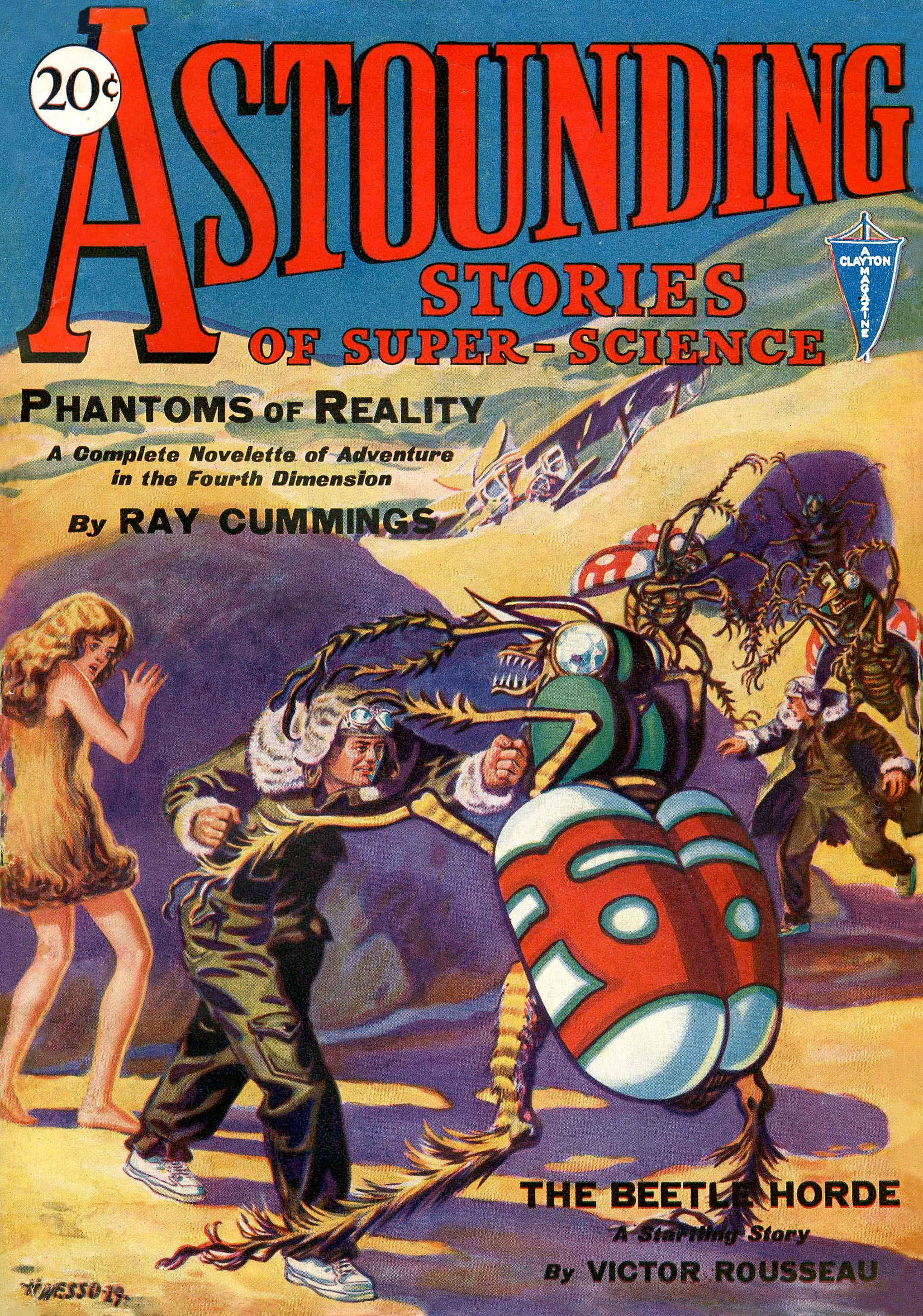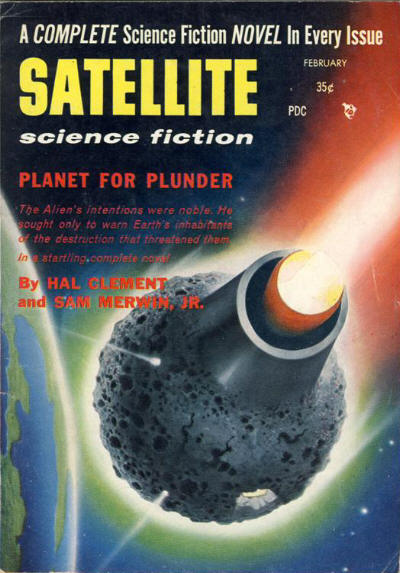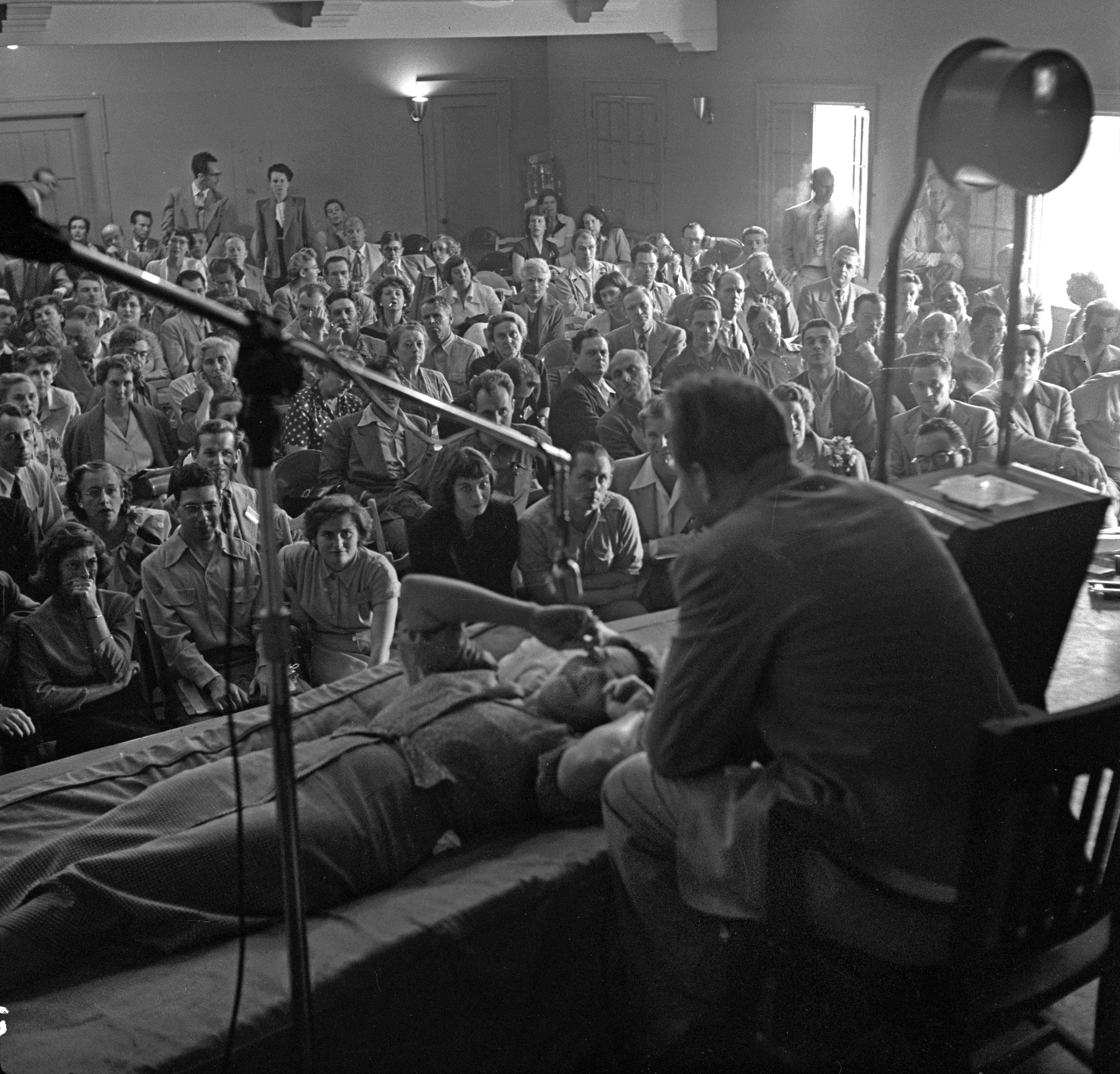|
Astounding
''Analog Science Fiction and Fact'' is an American science fiction magazine published under various titles since 1930. Originally titled ''Astounding Stories of Super-Science'', the first issue was dated January 1930, published by William Clayton, and edited by Harry Bates. Clayton went bankrupt in 1933 and the magazine was sold to Street & Smith. The new editor was F. Orlin Tremaine, who soon made ''Astounding'' the leading magazine in the nascent pulp science fiction field, publishing well-regarded stories such as Jack Williamson's '' Legion of Space'' and John W. Campbell's "Twilight". At the end of 1937, Campbell took over editorial duties under Tremaine's supervision, and the following year Tremaine was let go, giving Campbell more independence. Over the next few years Campbell published many stories that became classics in the field, including Isaac Asimov's ''Foundation'' series, A. E. van Vogt's ''Slan'', and several novels and stories by Robert A. Heinlei ... [...More Info...] [...Related Items...] OR: [Wikipedia] [Google] [Baidu] |
Harry Bates (author)
Hiram Gilmore "Harry" Bates III (October 9, 1900 – September 1981) was an American science fiction editor and writer. His short story "Farewell to the Master" (1940) was the basis of the well-known science fiction movie '' The Day the Earth Stood Still'' (1951). Biography Harry Bates was born Hiram Gilmore Bates III on October 9, 1900, in Pittsburgh, Pennsylvania. He began working for William Clayton in the 1920s as the editor of adventure pulp magazines. When Clayton proposed a period adventure magazine, Bates suggested several alternatives that he said would be easier to edit, and ''Astounding Science Fiction'' was the result. Bates, who was not a fan of science fiction, edited the magazine from its inception in January 1930 until March 1933, when Clayton went bankrupt and the magazine was sold to Street and Smith. During that time, he edited other magazines for Clayton, including '' Strange Tales'', intended to compete with '' Weird Tales''. Bates believed the sci ... [...More Info...] [...Related Items...] OR: [Wikipedia] [Google] [Baidu] |
Hal Clement
Harry Clement Stubbs (May 30, 1922 – October 29, 2003), better known by the pen name Hal Clement, was an American science fiction writer and a leader of the hard science fiction subgenre. He also painted astronomically oriented artworks under the name George Richard. In 1998 Clement was inducted by the Science Fiction and Fantasy Hall of Fame and named the 17th SFWA Grand Master by the Science Fiction and Fantasy Writers of America (presented in 1999). Biography Harry Clement Stubbs was born in Somerville, Massachusetts on May 30, 1922. He went to Harvard, graduating with a B.S. in astronomy in 1943. While there he wrote his first published story, "Proof", which appeared in the June 1942 issue of ''Astounding Science Fiction'', edited by John W. Campbell; three more appeared in later 1942 numbers. His further educational background includes an M.Ed. ( Boston University 1946) and M.S. in chemistry ( Simmons College 1963). During World War II Clement was a pilot ... [...More Info...] [...Related Items...] OR: [Wikipedia] [Google] [Baidu] |
Jack Williamson
John Stewart Williamson (April 29, 1908 – November 10, 2006), who wrote as Jack Williamson, was an American science fiction writer, often called the "Dean of Science Fiction". He is also credited with one of the first uses of the term ''genetic engineering''. Early in his career he sometimes used the pseudonyms Will Stewart and Nils O. Sonderlund. Early life Williamson was born April 29, 1908 in Bisbee, Arizona Territory. According to his own account, the first three years of his life were spent on a ranch at the top of the Sierra Madre Mountains on the headwaters of the Yaqui River in Sonora, Mexico. He spent much of the rest of his early childhood in western Texas. In search of better pastures, his family migrated to rural New Mexico in a horse-drawn covered wagon in 1915.Williamson, Jack. ''Wonder's Child: My Life in Science Fiction'' (Benbella Books, 2005) The farming was difficult there and the family turned to ranching, which they continue to this day near Pep. He ... [...More Info...] [...Related Items...] OR: [Wikipedia] [Google] [Baidu] |
Isaac Asimov
Isaac Asimov ( ; 1920 – April 6, 1992) was an American writer and professor of biochemistry at Boston University. During his lifetime, Asimov was considered one of the "Big Three" science fiction writers, along with Robert A. Heinlein and Arthur C. Clarke. A prolific writer, he wrote or edited more than 500 books. He also wrote an estimated 90,000 letters and postcards. Best known for his hard science fiction, Asimov also wrote mystery fiction, mysteries and fantasy, as well as much nonfiction. Asimov's most famous work is the ''Foundation series, Foundation'' series, the first three books of which won the one-time Hugo Award for "Best All-Time Series" in 1966. His other major series are the ''Galactic Empire series, Galactic Empire'' series and the ''Robot series, Robot'' series. The ''Galactic Empire'' novels are set in the much earlier history of the same fictional universe as the ''Foundation'' series. Later, with ''Foundation and Earth'' (1986), he linked this distant ... [...More Info...] [...Related Items...] OR: [Wikipedia] [Google] [Baidu] |
The Cold Equations
"The Cold Equations" is a science fiction short story by American writer Tom Godwin, first published in '' Astounding Magazine'' in August 1954. In 1970, the Science Fiction Writers of America selected it as one of the best science-fiction short stories published before 1965, and it was therefore included in '' The Science Fiction Hall of Fame, Volume One, 1929–1964''. The story has been widely anthologized and dramatized. Summary The story takes place entirely aboard an Emergency Dispatch Ship () headed for the frontier planet Woden with a load of desperately-needed medical supplies. The pilot discovers a stowaway: An eighteen-year-old girl. By law, all stowaways are to be jettisoned, because vessels carry only the fuel absolutely necessary to land safely at their destination. The girl merely wanted to visit her brother on the remote planet and was unaware of the law: When she saw the "UNAUTHORIZED PERSONNEL KEEP OUT!" sign while sneaking on board the , she thought that a ... [...More Info...] [...Related Items...] OR: [Wikipedia] [Google] [Baidu] |
Galaxy Science Fiction
''Galaxy Science Fiction'' was an American digest-size science fiction magazine, published in Boston from 1950 to 1980. It was founded by a French-Italian company, World Editions, which was looking to break into the American market. World Editions hired as editor H. L. Gold, who rapidly made ''Galaxy'' the leading science fiction magazine of its time, focusing on stories about social issues rather than technology. Gold published many notable stories during his tenure, including Ray Bradbury's "The Fireman", later expanded as ''Fahrenheit 451''; Robert A. Heinlein's ''The Puppet Masters''; and Alfred Bester's ''The Demolished Man''. In 1952, the magazine was acquired by Robert Guinn, its printer. By the late 1950s, Frederik Pohl was helping Gold with most aspects of the magazine's production. When Gold's health worsened, Pohl took over as editor, starting officially at the end of 1961, though he had been doing the majority of the production work for some time. Under Pohl ''Gala ... [...More Info...] [...Related Items...] OR: [Wikipedia] [Google] [Baidu] |
Twilight (Campbell Short Story)
"Twilight" is a post-apocalyptic science fiction short story by American author John W. Campbell. It was originally published in 1934 in ''Astounding Stories'' and apparently inspired by H. G. Wells' article '' The Man of the Year Million''. In 1970, it was selected as one of the best science fiction short stories published before the creation of the Nebula Awards by the Science Fiction Writers of America. As such, it was published in '' The Science Fiction Hall of Fame Volume One, 1929-1964''. Set in 1932 in an unknown city in the United States, the narrator introduces Jim Bendell who recounts his experience with a strange and mysterious hitch-hiker. The hitch-hiker, who introduces himself as Ares Sen Kenlin, claims to be a time traveler from the year of 3059. Having landed in 1932 by mistake, Kenlin takes the opportunity to warn Bendell of the future that awaits humanity. Seven million years in the future, the Earth is no longer populated by human kind. Human beings are extinc ... [...More Info...] [...Related Items...] OR: [Wikipedia] [Google] [Baidu] |
Science Fiction Magazine
A science fiction magazine is a publication that offers primarily science fiction, either in a hard-copy periodical format or on the Internet. Science fiction magazines traditionally featured speculative fiction in short story, novelette, novella or (usually serialized) novel form, a format that continues into the present day. Many also contain editorials, book reviews or articles, and some also include stories in the fantasy and horror genres. History of science fiction magazines Malcolm Edwards and Peter Nicholls write that early magazines were not known as science fiction: "if there were any need to differentiate them, the terms scientific romance or 'different stories' might be used, but until the appearance of a magazine specifically devoted to sf there was no need of a label to describe the category. The first specialized English-language pulps with a leaning towards the fantastic were '' Thrill Book'' (1919) and ''Weird Tales'' (1923), but the editorial policy of ... [...More Info...] [...Related Items...] OR: [Wikipedia] [Google] [Baidu] |
Golden Age Of Science Fiction
The first Golden Age of Science Fiction, often recognized in the United States as the period from 1938 to 1946, was an era during which the science fiction genre gained wide public attention and many classic science fiction stories were published. In the history of science fiction, the Golden Age follows the "pulp era" of the 1920s and 1930s, and precedes New Wave science fiction of the 1960s and 1970s. The 1950s are a transitional period in this scheme; however, Robert Silverberg, who came of age in the 1950s, saw that decade as the true Golden Age. According to historian Adam Roberts, "the phrase ''Golden Age'' valorises a particular sort of writing: ' Hard SF', linear narratives, heroes solving problems or countering threats in a space-opera or technological-adventure idiom."Roberts, Adam ''The History of Science Fiction'', p. 195, New York: Palgrave Macmillan, 2006. From Gernsback to Campbell One leading influence on the creation of the Golden Age was John W. Campbell ... [...More Info...] [...Related Items...] OR: [Wikipedia] [Google] [Baidu] |
Dianetics
Dianetics (from Greek ''dia'', meaning "through", and ''nous'', meaning "mind") is a set of pseudoscientific ideas and practices regarding the metaphysical relationship between the mind and body created by science fiction writer L. Ron Hubbard. Dianetics is practiced by followers of Scientology and the Nation of Islam (as of 2010). Dianetics was originally conceived as a branch of psychiatry, which Hubbard would later despise when various psychoanalysts refused his form of psychotherapy. Though it is presented as a form of psychological treatment, Dianetics, and its core concepts including auditing and engrams, have been rejected by psychologists and other scientists from the outset and are unsupported by credible evidence. Background Dianetics divides the mind into three parts: the conscious "analytical mind", the subconscious " reactive mind", and the somatic mind. The goal of Dianetics is to erase the content of the "reactive mind", which practitioners believe interfer ... [...More Info...] [...Related Items...] OR: [Wikipedia] [Google] [Baidu] |
Foundation Series
The ''Foundation'' series is a science fiction book series written by American author Isaac Asimov. First published as a series of short stories in 1942–50, and subsequently in three collections in 1951–53, for thirty years the series was a trilogy: '' Foundation''; '' Foundation and Empire''; and '' Second Foundation''. It won the one-time Hugo Award for "Best All-Time Series" in 1966. Asimov began adding new volumes in 1981, with two sequels: '' Foundation's Edge'' and '' Foundation and Earth'', and two prequels: ''Prelude to Foundation'' and '' Forward the Foundation''. The premise of the stories is that, in the waning days of a future Galactic Empire, the mathematician Hari Seldon spends his life developing a theory of psychohistory, a new and effective mathematics of sociology. Using statistical laws of mass action, it can predict the future of large populations. Seldon foresees the imminent fall of the Empire, which encompasses the entire Milky Way, and a Dark ... [...More Info...] [...Related Items...] OR: [Wikipedia] [Google] [Baidu] |
Tom Godwin
Tom Godwin (June 6, 1915 – August 31, 1980) was an American science fiction author active throughout the 1950s into the 1970s. In his career, Godwin published three novels and around thirty short stories. He is best known for his short story, "The Cold Equations". Published in 1954, the short story was Godwin’s fourth work to be published and was one whose controversial dark ending helped redefine the genre. Early life and education Godwin was born in Maryland in 1915. He had a rough childhood that was marked by much loss and suffering. At the age of five, his younger sister died as a result of an accidental shooting that occurred after he had been "playing with the gun that killed her". After his mother's death, he was raised by his father, with whom he did not have the best relationship. He withdrew from school after the third grade, but he went on to teach himself multiple other subjects to expand his knowledge and be able to write better stories. Personal life Godwi ... [...More Info...] [...Related Items...] OR: [Wikipedia] [Google] [Baidu] |




_-_Not_to_be_opened_-_1.png)


